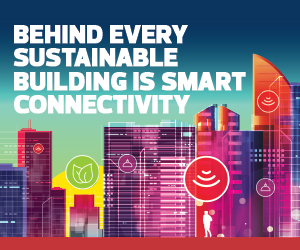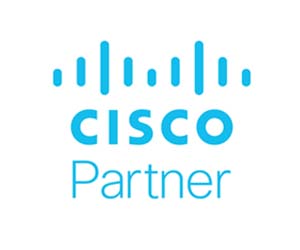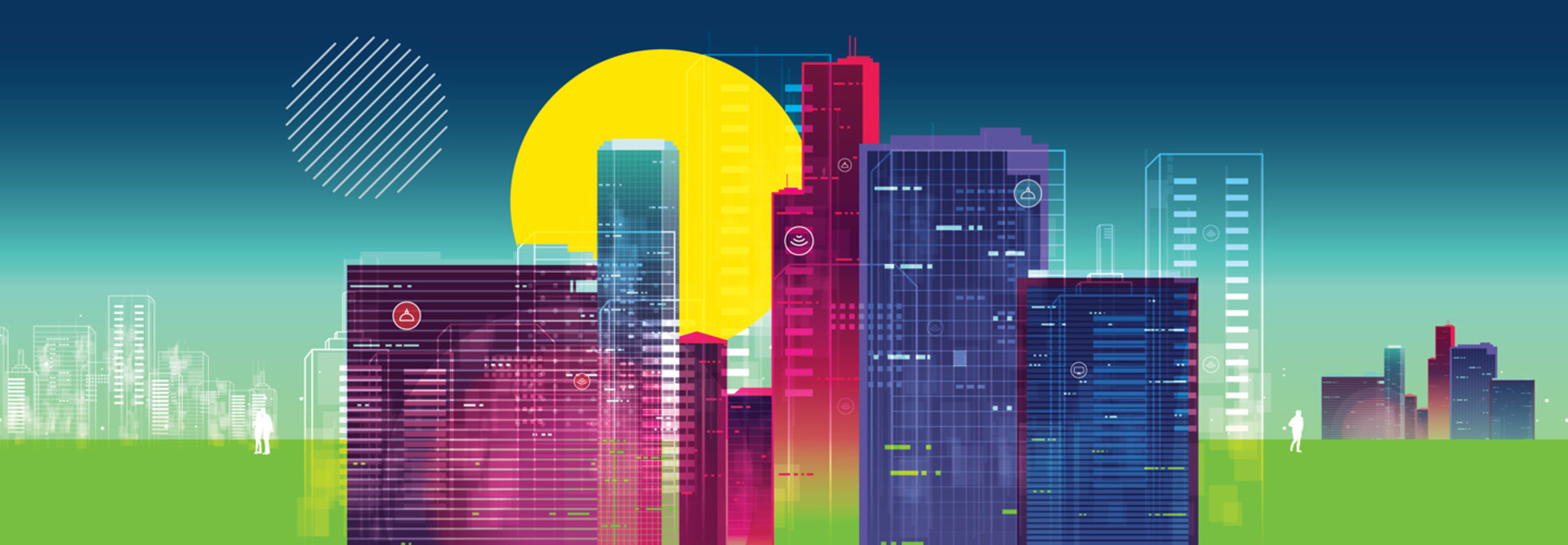As companies pursue sustainability strategies, networking has emerged as an essential element. An effective, intelligent network can facilitate connected ecosystems that rely on data, sensors and automated building systems to enhance efficiency, reduce energy consumption and support sustainability.
In the U.S., residential and commercial buildings consume roughly 20 percent of total energy and generate nearly 40 percent of carbon dioxide emissions, making them an excellent target for energy savings, says Kevin Carbonnier, a senior technical associate with the New Buildings Institute.
“Buildings play a huge role in sustainability,” he says.
For businesses, sustainability has taken on importance beyond the fact that it’s good for the environment, says Dawn James, managing director at Deloitte Consulting. It has become a matter of maintaining a competitive advantage, retaining talent and future proofing business models.
“By recognizing the potential of smart buildings, organizations can advance their corporate sustainability goals and stay ahead of the curve when it comes to reducing emissions and improving their bottom lines,” James says.
Intelligent networking technologies can help organizations achieve these objectives by automating the compilation and transmission of data for analysis as well as the management of connected systems. Organizations that use these technologies effectively can improve their efficiency, reduce costs and decrease waste, such as greenhouse gas emissions.
Click the banner to learn how Cisco solutions can support your organizations.


Sensors and Connected Systems Yield Valuable Data on Energy Use
Columbia University’s Center for Buildings, Infrastructure and Public Space has identified lighting, windows, chillers and boilers, building management systems, and renewable energy sources as key metrics for building efficiency. When organizations pair these systems with networked sensors, they can support occupancy-based energy consumption that adapts to real-time usage patterns.
For example, sensors connected by smart networks to lighting and heating, ventilation and air conditioning (HVAC) equipment could detect when employees enter an empty conference room so that lights and AC turn on only when needed.
“That can have a huge impact on the building’s energy use,” says Tim Carr, a senior engineering consultant with Efficiency Vermont. “We often see, when a building automation system is added, an average of 5 to 15 percent in total energy savings, so it’s not insignificant.”
Occupancy-based use is also a baseline capability, Carr notes. Organizations can increase their energy efficiency by layering other networked capabilities onto a building automation system, such as making a building grid interactive to automatically adjust internal temperatures based on electricity pricing, grid load and other factors.
LEARN MORE: How smart network connectivity supports sustainable buildings.
One of the most significant advantages of smart buildings is that they make it easier for companies to obtain granular visibility into their energy use, which can otherwise be a challenge.
When Efficiency Vermont works with companies to analyze their consumption patterns, smart meters often reveal information that organizational leaders weren’t aware of, says Engineering Manager Abiodun Iwayemi. For instance, systems might not shut down at night as expected.
“Sometimes, what they think is going on and what’s actually happening are two different things,” he says.
Building automation systems can be especially valuable for hybrid work environments, which tend to introduce unpredictable usage patterns that make it harder to optimize energy consumption.
“The rise of hybrid work increases the importance of implementing occupancy-based energy consumption strategies to deliver light and HVAC only to spaces that are in use,” James says.
By recognizing the potential of smart buildings, organizations can advance their corporate sustainability goals and stay ahead of the curve when it comes to reducing emissions and improving their bottom lines.”
Dawn James
Managing Director, Deloitte Consulting
Benchmarks and Behavioral Changes Can Kick-Start Energy-Efficiency
While automated building systems may deliver the most impact, companies can also use low- or no-cost strategies, including behavioral changes, to lower their energy consumption, says Iwayemi. He notes that one Efficiency Vermont customer cut its energy use by more than 30 percent simply by reminding employees to turn off systems that weren’t in use.
“Just having insight into what’s going on allows us to have an impact,” he says.
DIVE DEEPER: How AI is taking IoT to the next level to optimize enterprise intelligence.
As smart networking tools increase the amount and detail of data companies gather about their energy consumption, information can be a valuable tool to help companies improve their energy efficiency. Benchmarking against similar buildings within the same climate region is a great way to understand and improve energy consumption, says Carbonnier.
The ENERGY STAR Portfolio Manager is a free, interactive tool that can help companies identify energy-saving opportunities and implement best practices. “That’s a great starting point just to get an overall picture of how your building is performing,” he says.
Brought to you by:


Shivendu Jauhari (futuristic city), Panuwat Sikham (Digital city concept)/Getty Images














